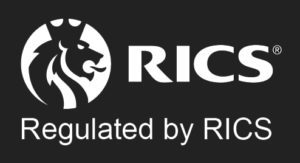Here to Stay? – Investor & Occupier Demand for Space

The effect hybrid working and ESG has, or will have, on office demand from office occupier, investor and owner standpoints cannot be considered in isolation. These influences must be considered within the wider office market ecosystem and how they operate in tandem to drive occupier decision making at lease event dates. The Covid Pandemic brought an instantaneous change to how we work whereas ESG requirements and regulations have been coming into the market at a steadier rate. While there is also uncertainty around the future of working models, that can be adapted and changed rapidly, there is no uncertainty about the increasingly important and dominant role ESG will play in the office sector. The ESG roll out will be slower and changes can be anticipated, however the ability to bring the stock to standard is a far more timely and resource intensive exercise.
Hybrid working for businesses will effectively assess how staff utilise office space as a resource to produce output. Ultimately it is the company who can decide how to implement their working models and the decisions will be led by the type of work carried out by the business, the need to attract and retain talent and the model that allows the business to grow and produce output efficiently. Both staff and workspace are a factor of production for a business and how the two are utilised against each other effectively to generate product should ultimately be the key focus of any commercial business. This should craft the post-pandemic workplace in the years ahead and this will likely differ industry by industry.
ESG considerations will continue to become more prominent drivers in the decision-making process for both occupiers, owners and investors. Currently, ESG in commercial real estate is very much lead by the private and financial markets, with factors such as corporate mandates and lender requirements influencing the demand for ESG grade space. It is envisaged that the regulatory environment (in an EU context) around occupation and investment will become more scrutinous and this will further drive the demand (and requirement) for ESG grade space in the future.
Occupiers will be looking into the impacts, whether they be positive of negative, that revised working models have on their ability to create an attractive and productive workspace as well as any ESG led requirements that are being implemented on a company specific or regulatory basis. The implementation of these will likely crystallise at either a lease break or expiry where spatial requirements can be most practically revised. Property owners will have to be cognisant of their occupiers’ requirements against key lease dates and how these correspond with asset management strategies to protect both the rental and market value of the building. Alternatively, investors must consider how to preserve or improve on an asset’s income at purchase or where opportunities may lie in bringing brown buildings into a green market.
Bannon have a suite of services available to assist CRE owners, occupiers and investors in strategic real estate decisions and ESG insights. Please feel free to reach out to discuss by emailing consultancy@bannon.ie.
Author: George Colyer, Surveyor, Bannon
Date: 16th June 2023





